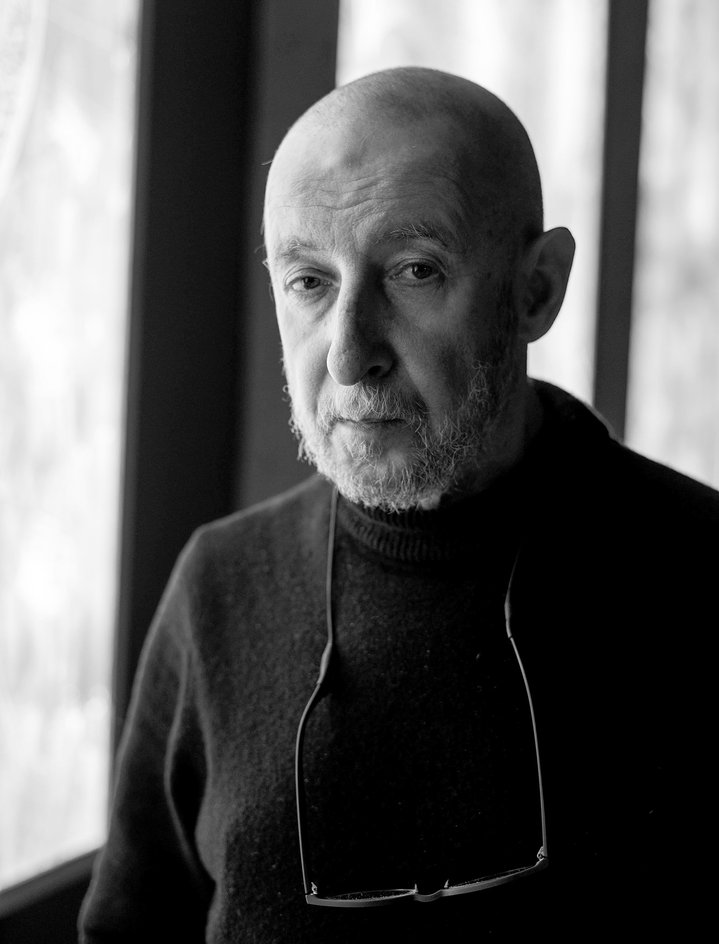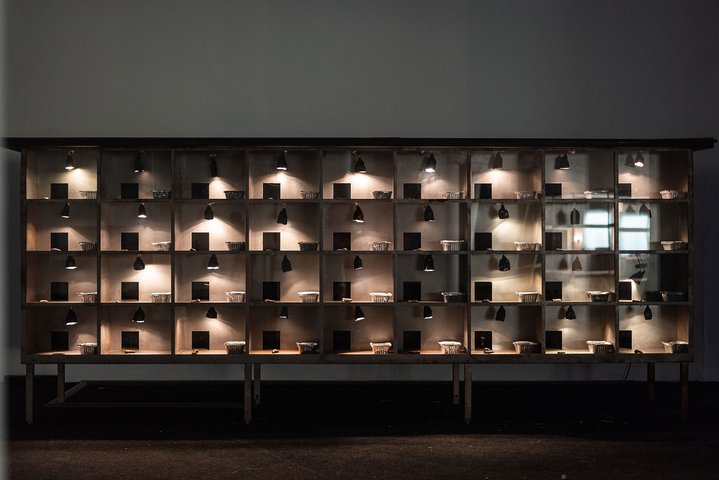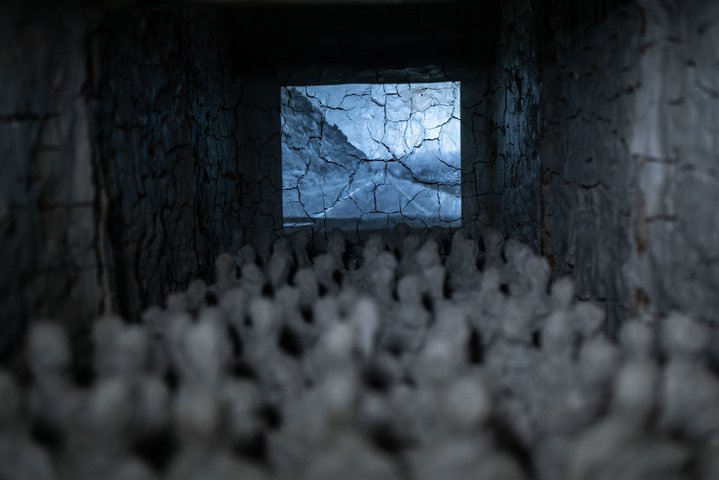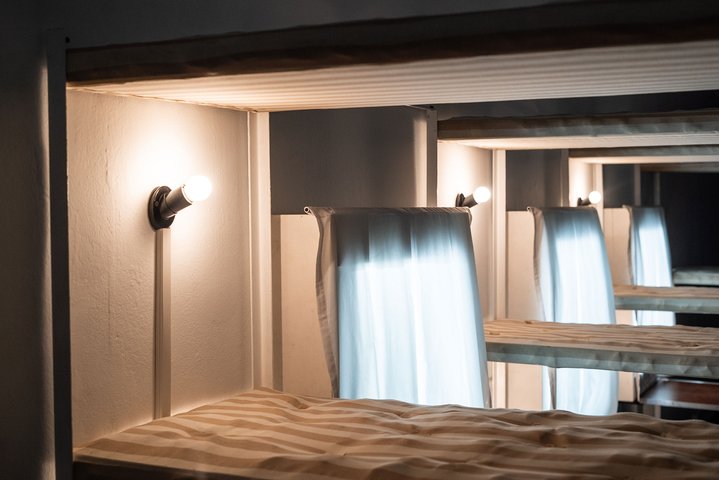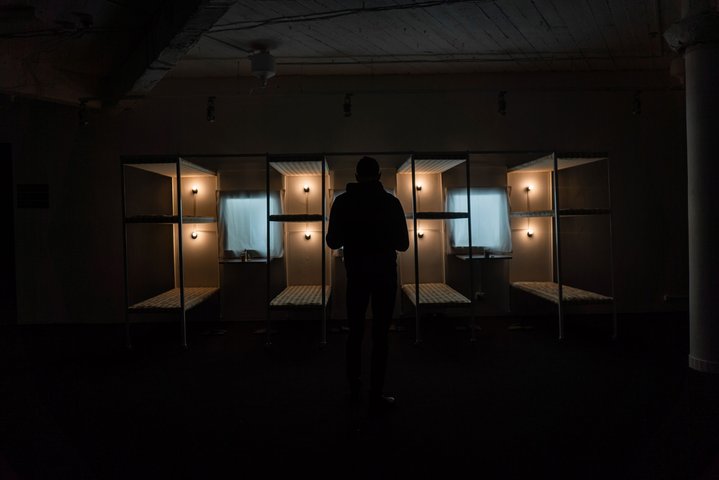Alexander Brodsky. Photo by Kirill Loginov
Alexander Brodsky: the grey matter of architecture
Artist and architect Alexander Brodsky is fascinated by the modest poetry and wistful beauty found in all things old, frail and shabby. And he makes them visible to everybody, such as the visitors to his current solo exhibition in the Russian city of Perm
“I thought of my own dacha, a small shaken house built by my grandfather near Moscow in the early 1950s, where I spent my childhood. It stood boarded up for many years, until I returned there as an adult, with my own children. I recalled how I opened that house, how I entered it, the smell of the damp rooms, the old clothes stacked there for years. I recalled many childhood memories in the dacha, how my father was insulating the water supply with old coats.”
This kind of poignant nostalgia permeates all of Alexander Brodsky's (b. 1955) creations. He has a romantic tenderness towards things that are time-worn, a respect for the memories which buildings carry, the poetics of overlooked spaces and the second life of things. All of this is encapsulated by the phenomenon of the dacha – the Russian country house. When Brodsky first went to see the Russian Pavilion at the Giardini in Venice during the off season, he expressed his feelings about this encounter through his own recollections of visiting his family dacha as a child. Brodsky himself was a participant of the Venice Biennale of Architecture on two occasions – once representing Russia in the pavilion (‘Inhabited Locality’, 2006) and once showing a commission as part of the main project (‘The Shed’, 2016). Both works are characterised by melancholy and absence: the former is a structure evidently designed to house some kind of animals, but they are nowhere to be seen. The second “shelter” has no doors or windows, just a view of the canal and an abandoned chess set – it is skewed, and clad with bitumen – the cheapest and least glamorous of roofing materials.
By all accounts, Alexander Brodsky is a star: his works are held in worldwide museum collections (MoMA, New York; Tate Modern, London; Deutsches Architektur Museum, Frankfurt am Main; the Hirshhorn Museum and Sculpture Garden, Washington, D.C.; The Russian Museum, St. Petersburg; The Pushkin Museum, Moscow among others). He has exhibited and built projects extensively around the world, in the USA, Japan, New Zealand, London, Austria, Venice and his homeland Russia. He is laureate of multiple competitions and awards, including the Innovation Prize, the Kandinsky Prize and the Grand-Prix of Architectural Critics at Arch Moskva.
Yet, he shies away from capitalizing on these laurels, retreating into his metaphorical dacha-shed. In each work, in his charmingly humble persona there nestles a modest sensitivity to the beauty of imperfections, to minute details and the charm of mistakes which seems to speak individually to the visitor.
The history of Brodsky’s creative journey is somewhat back to front: he began his career by winning competitions before he even built anything. He is one of the most notable proponents of the so-called “paper architecture” movement, which gained momentum in the late 1970s among young architectural graduates wanting to avoid conscription to governmental planning institutions. They sought freedom of expression through sketches and imaginary projects which they disseminated among foreign magazines and competitions. Architect, artist and curator Yury Avvakumov (b. 1957), who was a participant and has now become a historian and gatekeeper of the movement, summarises: “Paper architecture — a variation of conceptualism in architecture [...] the product of non-conformist reflection which appropriated languages and tropes of various architectural styles...”
The whimsical, elaborate architectural fantasies set down as etchings by Brodsky, in partnership with his university friend Ilya Utkin (b. 1955), found particular resonance in Japanese architectural circles — the duo won (second or first place) in eight Japanese competitions before 1987. Although, it wasn’t always straightforward managing to slip applications through Soviet censorship. Nonetheless, prize sums, which were generous by Soviet means, ensured the young conceptual architects a carefree and elevated existence, without needing to muddy themselves with Soviet construction.
Their success through publications corralled in invitations from foreign institutions and, as the iron curtain eventually lifted, the artist-architects found themselves in a position to travel. Thus, they were given scope for the physical realisation of their projects, first abroad and, with time, in their homeland. Working initially in tandem with Utkin, and eventually separating to work independently, Brodsky created some of his most iconic works, blurring the boundaries between sculpture and architecture in large-scale installations, reminiscent of theatre sets, often using recycled materials and the objects themselves, time-based and ephemeral.
He has made gallery installations and large-scale public sculptures. He transformed a New York Subway station into a Venetian lagoon for two months with a 5,000-gallon tank and real gondolas (1996). Unfired clay becomes a recurring material: he uses it to make awkward replicas of ordinary household objects (‘Grey Matter’, 1999), a model city in miniature which is gradually drowning in a river of petrol (‘Coma’, 2000), a humble chess set left to the elements (‘The Shed’, 2016), projection screens with a clay audience, and entire rooms. When I commissioned him to contribute a piece for what was my first and was to be my last curatorial project in 2012, he brought a charmingly humble and whimsical clay sandwich, tied together with elastic bands.
Brodsky explains his attraction to the material: “Talking of clay, it’s an amazing thing — in essence dust. Not striving to make it durable, not fire it, but transform it into something freely convertible. I have worked quite a lot with unfired clay. A fragile thing that easily turns back into powder, dust and it can be re-used again and again — crush it, soak it and make an endless number of new works out of it.” (Russkoe Bednoe exhibition catalogue, Perm, 2008).
Material poetics are key for Brodsky, he works a lot with old and recycled materials, such as antique doors and windows, or even used teabags. He is closely associated with the Land art festival ‘Archstoyanie’ in Nikola-Lenivets, a scenic riverside village in Kaluga Region, 200 km from Moscow. The most iconic construction there, both a symbol of the festival and perhaps even Brodsky’s magnum opus is ‘Rotonda’. It’s a homage to Palladio, an oval structure with no seeming purpose, made using numerous doors and providing a lookout to the surrounding landscape. Brodsky recalls that as soon as the structure had been installed, he saw some butterflies fly through it and, for him, this was a sign of its acceptance by nature.
Ostensible humility is a trademark of Brodsky. He was a key figure in the exhibition ‘Russkoe Bednoe’ (“Russian Povera” – a reference to Arte Povera) curated by Marat Guelman (declared a foreign agent by the Russian authorities) in Perm in 2008 – which drew together Russian artists working with a DIY aesthetic, cheap and found materials. “The exhibition ‘Russian Povera’ brought together the dissidents of design, the dissidents of glamour. Each of them underscores the handmade and home-made quality of his artistic production,” writes Boris Groys in the catalogue. Perhaps even more so in the world of contemporary architecture, rather than art, where fragility and destruction are taboo ideas, Brodsky is a dissident figure, swimming against the tide. He embodies the antithesis to stereotypical “starchitects” competing for the highest erection in steel and glass. “In a world obsessed with commerce and technical innovation, there is little room for poetry in architecture. In this sense, the poetic gift of the architect Brodsky is unique,” writes architect Evgeny Asse, Moscow’s leading architectural pedagogue.
‘Russian Povera’ was an ambitious project signalling the launch of an unprecedented cultural revolution in the Ural city of Perm, where a contemporary art museum PERMM was officially opened the following year. Brodsky has maintained a connection with Perm and a recently opened one-man show in the Museum, titled ‘Dar’ (“Gift”), which runs until April 4, 2021, celebrates a newly donated, large work, bringing the total number of Brodsky’s pieces in their collection to thirty. This institutional recognition is especially critical, as it gives the large-scale works the space and care needed for their preservation. It saves them from destruction, as has very often been the case with this kind of work, a fate which Brodsky laments. The exhibition shows six key works, with the first floor taken over by raw clay models of abandoned factories and the entire second floor is given to his largest work, a city made of translucent tents with mysterious characters inside. Paradoxically, it was only at the relatively late age of 45 (22 years after graduating from the Moscow Architectural Institute in 1972) that Brodsky founded his own practice and begin designing architectural projects in a more traditional sense – buildings. Though, usually, these are small constructions and interiors for private individual clients, that allow Brodsky to exercise the freedom of his creative vision.
“Brodsky came into art as an architect and returned to architecture as an artist. That isn’t just a biographical fact, but his creative credo,” writes Yevgeny Asse. His works argue the case that architectural language has room for poetry, philosophy and contemplation and quiet though his statements may be, they continue to make a lasting impression on audiences around the world.






